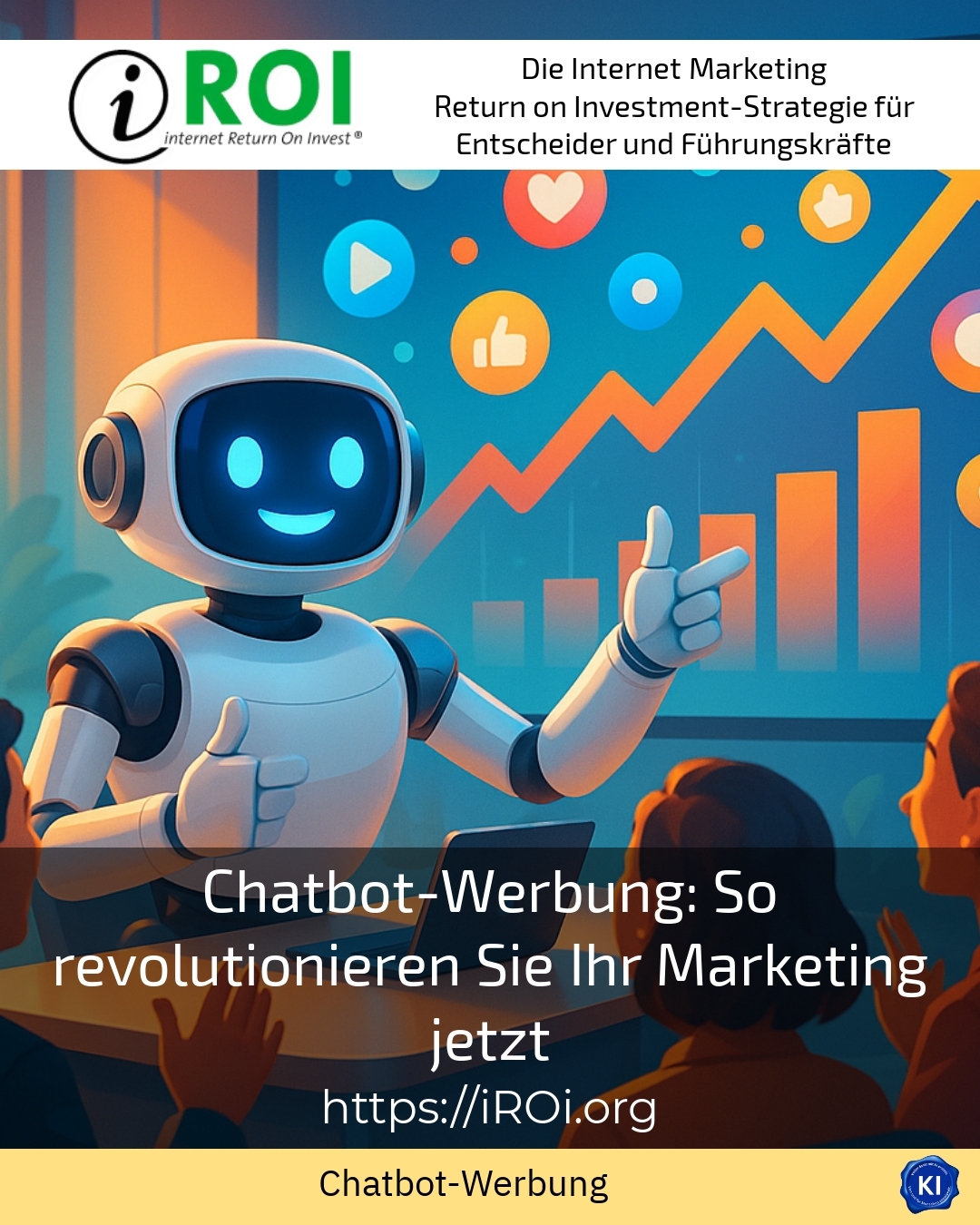The modern digital world requires companies to constantly develop their marketing strategies. Chatbot advertising is becoming increasingly important as it offers innovative ways to address customers directly and in a targeted manner. The integration of chatbots into marketing processes is not a passing trend, but a sustainable support that helps companies to better understand customers and enter into dialogue with them.
Chatbot advertising: why it is redefining marketing strategies
Chatbot advertising uses automated dialogue to pick up users where they are digitally. This allows customer questions to be answered quickly, products to be presented and even purchase decisions to be supported. This increases customer satisfaction and creates new sales opportunities at the same time. This form of advertising is revolutionising many industries thanks to its constant availability and personalised approach.
One major advantage is scalability: chatbots can communicate with numerous users at the same time without compromising on quality. This is particularly helpful in e-commerce, in the service sector or in B2B, where fast response times are crucial. Online shops, for example, use chatbot advertising to provide targeted advice to prospective customers and speed up purchasing processes.
Practical examples from various industries
In the retail sector, a department store chain uses chatbot advertising on WhatsApp to recommend personalised Christmas promotions to customers and make it easier for them to place orders. This personalised approach has significantly increased customer loyalty.
A sports club integrates a chatbot into its ticket and merchandising system. The bot answers many enquiries about match tickets and fan merchandise during the season, effectively increasing online sales.
Experience worlds such as museums also use chatbot advertising to improve visitor guidance. The chatbot answers FAQs, helps with bookings and supports personalised offers, significantly enhancing the user experience.
How to use chatbot advertising effectively in your company
Targeted planning is important in order to use chatbot advertising effectively. The first step is to analyse the most frequent customer questions and design the chatbot in such a way that it answers them in a competent and friendly manner. AI-based systems with natural language processing, which can also understand and process complex enquiries, provide support here.
It is also advisable to consider chatbots not only as a customer service tool, but also as an active sales channel. Intelligent conversation can qualify potential customers and lead to conversion through personalised product suggestions. This has a direct impact on the return on investment.
A rule-based variant is suitable for standardised, frequently recurring processes, while AI-supported chatbots show their strengths especially when it comes to more individual advice and more complex issues. Companies can therefore choose the right chatbot depending on their needs and complexity.
Customer examples and proven implementation
BEST PRACTICE with one customer (name hidden due to NDA contract) The chatbot supported the sales team by automating the initial contact with potential new customers. Appointments could be arranged more effectively via targeted messaging, significantly accelerating the sales funnel. In addition, frequent questions about products were automatically intercepted, which relieved the employees and improved the quality of the conversation.
BEST PRACTICE with one customer (name hidden due to NDA contract) The implementation of an AI chatbot on the website of a medium-sized online retailer reduced abandoned purchases. The bot offered customised discounts and accompanied customers until they completed their purchase. The conversion rate increased by 27 per cent in the first quarter.
BEST PRACTICE with one customer (name hidden due to NDA contract) In the service industry, chatbot advertising was used to digitalise appointment scheduling. The bot automatically reminded customers of open appointments and enabled direct bookings via Messenger. Customer satisfaction improved measurably as a result.
Tips for successful chatbot advertising
Plan the content of the chatbot carefully and regularly test whether the answers are actually helpful. Supplement the bot with an option to forward complex issues to a human contact person.
Use data from previous chat interactions to further develop the bot. Ongoing optimisation enhances the user experience and increases the effectiveness of chatbot advertising.
Integrate the chatbot into relevant marketing channels such as websites, social media and messenger platforms. This allows you to reach users where they spend the most time.
My analysis
Chatbot advertising offers a wide range of opportunities to make marketing measures more customer-centred and efficient. Companies from various industries report positive experiences of how this enables them to reach customers in a more targeted manner, reduce briefing efforts and increase sales. The combination of artificial intelligence and good design plays a key role here. Those who establish and accompany the dialogue with their target group can benefit in the long term.
Further links from the text above:
The 13 best chatbot examples from the field - moinAI
3 chatbot examples for your business | OMR Reviews
Chatbot marketing: Benefits, use cases + strategies - Zapier
Conversational marketing: 16 innovative examples - Sinch
What Is Chatbot Marketing? | IBM
For more information and if you have any questions, please contact Contact us or read more blog posts on the topic internet Return on Investment - Marketing here.















